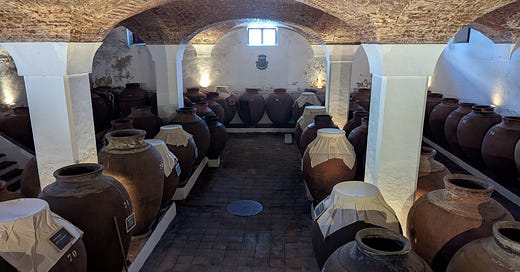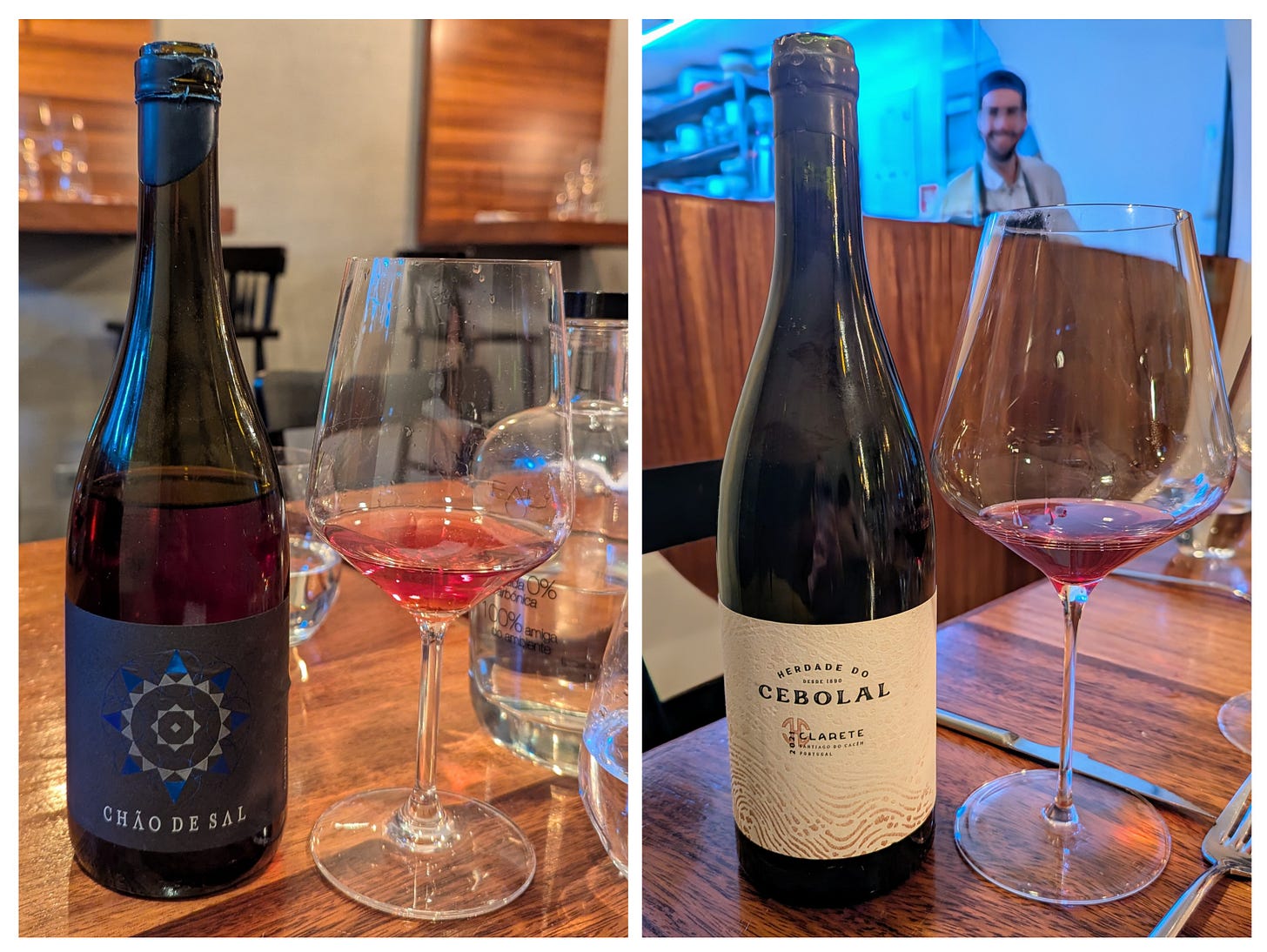Three Portuguese wine trends the world should watch
Clarete, clay and the case against vintage
I’ve been in Portugal for the past two months – as I have been every February/March/April for the last four years. (In case you’re wondering: this is because I’m able to work remotely so long as I don’t piss off the tax man – not because I can afford to take buckets of holiday every year.) Over that period, my interest in wine has… mushroomed, to say the least. Hopping on the WSET bandwagon, visiting a barrel load of wine businesses, even doing the research for all these articles – my interior monologue is more often than not banging on about wine.
So it may be that the things I’ve observed this year in Portugal were there all along – it’s just now that I’m noticing them. It might also be that these techniques are more common in the Azores and Alentejo (where I’ve been most recently) than in other regions. If you have experience of these elsewhere, let me know in the comments!
1. The case for quality non-vintage wines
I’d always associated non-vintage wines with cheap, mass-market brands that wanted to guarantee the consistency of their (rather boring) product. But several times on this trip, I’ve tasted really high-quality, terroir-driven (ugh!) wines that are a blend of several vintages. Not because the winemaker is trying to ensure a consistent style – quite the opposite, in fact. They’re experimenting – looking to produce something interesting rather than crowd pleasing.
A case in point is António Maçanita, who seems to have a finger in a lot of Portuguese pies. Discovering Maçanita has been a bit like your dad buying a new car: you’d never even heard of that model, but now that you’ve seen it once it’s popping up everywhere. Hence I came across him via the Azores Wine Company, then seemed to follow him to Alentejo, and have now discovered he’s working in the Douro Valley and Madeira as well. The man is prolific! He’s also a master of the non-vintage blend.

2. Clarete as an emerging category
I was vaguely aware of clarete as a term used mostly to describe Spanish wines that are somewhere between a rosé and a light red. As I understand it, they’re often made by co-fermenting both red and white grapes, macerating the juice on the skins for longer than a blush but less time than a red. But it was only on this trip that I suddenly started to see Portuguese clarete all over the place.
Here, I’ve seen some that seem to meet the Spanish definition, and others that are made only using red grapes. And while the exact hue of pinkish-red differs, that refreshingly chillable yet chewy texture is common to them all. Given how much the hipsters of Northern Europe seem to enjoy those exact qualities in an orange wine, I can’t help thinking that clarete would be lapped up in a natural wine bar in Amsterdam.
3. The revival of the Talha technique
Yes, everyone seems to be talking about Georgian orange wine made in qvevri – but the Georgians aren’t the only ones using clay pots. The Alentejans have been fermenting and ageing wine in “Talha” – huge clay vessels that look a lot like amphorae – for centuries. It seems that talha wines had fallen out of fashion for a while (certainly internationally), but now I’m seeing a serious revival. And even modern wineries or those with no talha history themselves are getting in on the clay pot action. Presumably because the small amount of oxygen permeation that clay allows lends all sorts of complex depth to wine, without any of the oak-barrel ageing side effects.
So, what do you think: Are consumers where you live ready for a non-vintage clarete made in a clay pot? Have you seen these trends elsewhere or are they uniquely Portuguese?
Further reading:
Next week, I’ll be writing a similar guide to the area of Alentejo around Évora where I’ve been based for the past three weeks. To be sure you receive it, subscribe!







Another hint (Ervideira) for tour search: wine aged under the water in Alqueva. Have you crossed this specialty? Cheers.
Love you are getting to know my favorite winemaking country so much! But shoot, I may need to stop drinking clarete as I want to never be associated with hipsters again in my life (I went to art college in Philly🤣) in all seriousness Portugal is incredible, they are truly doing incredible things in wine. Something for everyone.